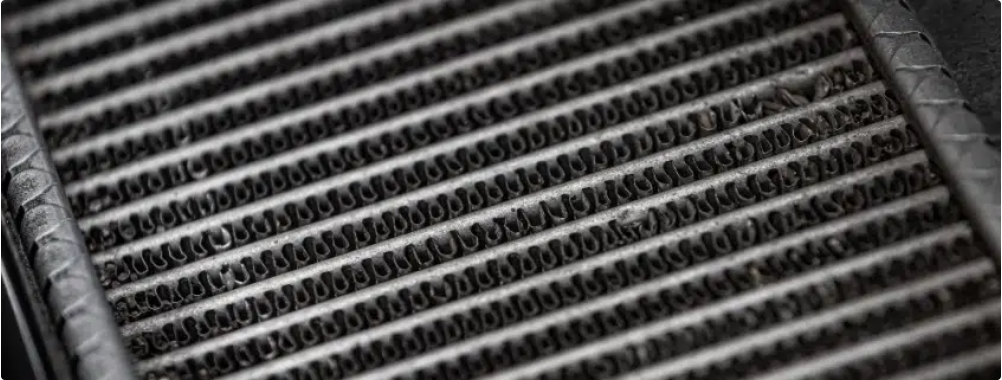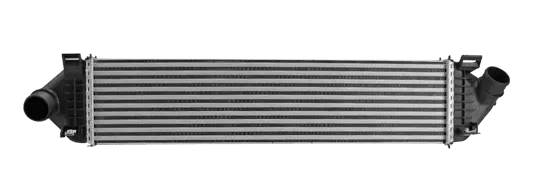How to clean a turbo diesel intercooler
Is your car underperforming?
Turbocharged diesel engines are often accompanied by an intercooler to help remove the heat produced by air compression. If your intercooler fails, you might notice some abnormal behavior including the obvious one – engine overheating.
So how do you prevent the failure of the all-important intercooler? Well, YIBAI has put together a detailed guide on how to spot symptoms and look after your intercooler to avoid costly repairs.
How to clean a turbo diesel intercooler
Sometimes all your intercooler needs is a good cleanout. The heat exchanger works much like a radiator and can sometimes become clogged or blocked. Depending on the type of Intercooler, this may be restricted to blockage externally on the surface of the fins. If it’s a liquid-to-air intercooler, the clogging can happen internally as well. If the blockage is minor, a simple way to fix this is to remove the build-up.
Further on we will discuss how to perform a cleanout and when to seek assistance if you’re not sure how to perform these fixes. But first, we want to walk you through the cooling system and the general role of an intercooler.
Turbo diesel engines
Turbo chargers are often (but not exclusively) found in diesel engines to help improve fuel economy and power output. A turbo intakes a large amount of air — far more than a naturally aspirated engine — which allows for better combustion. A naturally aspirated engine utilizes ambient airflow only. It relies on natural forces such as atmospheric pressure, cylinder movement and the venturi effect to create a vacuum for pushing the air through to the combustion chamber. They are generally associated with less power.
A turbocharged engine is referred to as a forced induction engine since the air is pushed into the engine at high pressure. Being compressed by the turbo, more air enters the combustion chamber. This aids the fuel/air mixture to combust at a faster rate and therefore distributing more energy to critical elements of the car. More energy = more power.
The difference here is obviously air compression and this process creates a lot of excess heat. Hot air expands which reduces the air density and provides less oxygen. This is not ideal for combustion and so, this is where the intercooler comes in. The intercooler cools the air before entering the engine, which increases oxygen density. By removing this heat caused by compression, it also helps prevent engine overheating. Without this, the engine operating temperature would be higher which reduces fuel efficiency and accelerates wear.
Signs and symptoms
Now that you know how a turbo diesel system works, we want to help you identify when your intercooler needs some TLC.
- Engine overheating. As we mentioned before, overheating during usual driving conditions is a sure sign that something is wrong. Clogging or blockage could be reducing the intercooler’s ability to transfer heat.
- Noticeable drop in engine power. For the same reason, the engine may not be receiving as much cool air for combustion and power delivery may be reduced.
- Increased fuel consumption. The combustion process may be compromised, which results in increased fuel consumption.
- Unnatural smoke coming from the exhaust system. A leak is a possible cause, which can result in a skewed air-fuel ratio. Sometimes this can lead to left-over fuel being burnt and black smoke escaping.
- Leakage. Sometimes hoses and lines can collapse or the coolant (in liquid-to-air intercoolers only) has become contaminated. You can often tell that this has happened by the above symptoms. If there is a build-up of oil in your intercooler, it may be your turbo that is leaking or an EGR cooler leak which could also contribute to a build-up of deposits.
To clean or not to clean
It’s possible to tackle intercooler cleanouts yourself, but it’s ideal if you’re already well versed in turbocharged systems. If you feel confident, then the following steps are made for you.
- In order to clean the intercooler, it first needs to be removed from the car. Sometimes this may include removing the front bumper depending on where it is mounted.
- While removing, be mindful of disconnecting any hoses and piping. Once removed, take off any remaining seals or grommets that may be damaged by cleaning chemicals.
- Spray the outside and inlets of the intercooler with degreaser to prepare any gunk or debris for removal.
- After that, you can use acetone or kerosene to rinse out the intercooler. Place in a container and pour the liquid through the inlet, shimmy it slightly and then let it sit for about 15 minutes. Pour it out once this time has passed. You can repeat this step a few times until the cleaning agent comes out clear.
- You can also use methylated spirits to further clean the intercooler as it acts as a form of degreaser.
- Rinse and let it dry for a few hours before refitting. Take care to dispose of waste chemicals responsibly as they can be toxic. (Disclaimer, it may kill your grass…)
If a clean out hasn’t made much difference, there might be something more sinister going on. We’d recommend you take it to a professional to diagnose any underlying issues. Other engine components may be malfunctioning, so an intercooler replacement may not fully solve the problem. If you are in need of replacement, it’s a good idea to have a professional install it correctly to deliver optimum performance.
Post time: Oct-26-2023


